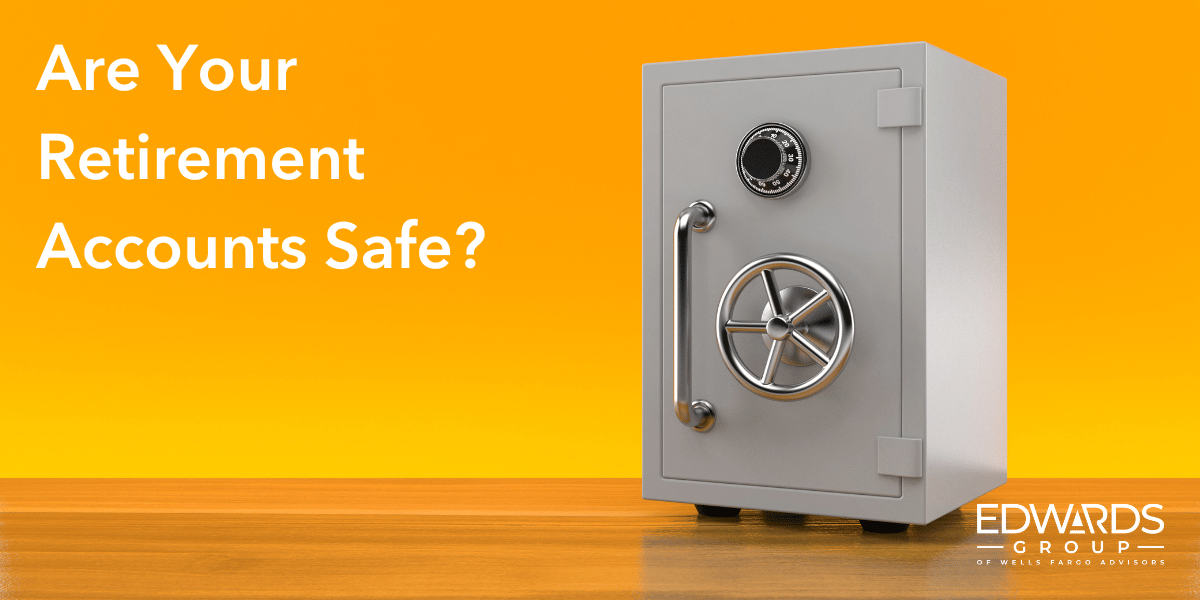Ensuring the Security of Your Retirement Accounts: A Comprehensive Guide


As the years go by, retirement planning has become increasingly important, and retirement accounts have become a cornerstone of securing one's financial future. Whether it's a 401(k), IRA, or another type of retirement account, these vehicles are designed to help individuals save for their golden years. However, the question remains: How protected are your retirement accounts? In this article, we will delve into the security measures in place to safeguard your hard-earned savings and provide you with actionable steps to evaluate your financial security.
Retirement Account Protections
Regulatory Oversight: Retirement accounts are regulated by various government agencies, such as the U.S. Department of Labor and the Securities and Exchange Commission (SEC). These agencies implement rules and regulations to ensure that retirement funds are managed and invested responsibly. Regulatory oversight aims to prevent fraudulent activities and mismanagement.
Federal Insurance: While not all retirement accounts are insured, certain types are protected by federal insurance programs. For instance, traditional bank accounts within an Individual Retirement Account (IRA) might be insured by the Federal Deposit Insurance Corporation (FDIC) for up to $250,000 per depositor, per account category, in case the bank fails.
Qualified Plans: Retirement accounts, such as 401(k)s and 403(b)s, are considered "qualified plans," which means they offer tax advantages. These plans have strict regulations in place to ensure that employer-sponsored retirement funds are appropriately managed, benefiting both employees and employers.
Custodian Institutions: Many retirement accounts require a custodian or trustee to hold and manage the assets within the account. These custodian institutions are subject to regulatory oversight and fiduciary responsibilities, ensuring they act in the best interest of the account holders.
Diversification Requirements: Some retirement accounts have rules in place to promote diversification, which minimizes risk by spreading investments across different asset classes. This protects account holders from extreme losses due to the poor performance of a single investment.
Evaluating Financial Security
Account Type Analysis: Start by understanding the type of retirement account you have. Is it an employer-sponsored plan like a 401(k), or an individual account like an IRA? Different account types offer varying levels of protection and benefits.
Regulatory Compliance: Research the regulations governing your retirement account. Are the custodians or trustees adhering to their fiduciary responsibilities? Are the investments within the account compliant with regulations? Scrutinize the account statements and annual reports for signs of compliance.
Insured Deposits: If your retirement account includes a bank component, ensure that the bank is FDIC-insured. This insurance covers your deposits up to a certain limit in case the bank encounters financial difficulties.
Custodian Reputation: For accounts requiring a custodian or trustee, investigate the reputation of the institution. Look for reviews, ratings, and any history of regulatory violations.
Investment Diversity: Evaluate the diversity of your investment portfolio. A well-diversified portfolio can help mitigate risks associated with market fluctuations. If your portfolio is heavily concentrated in a single asset or sector, consider rebalancing it.
Professional Advice: Seek guidance from financial advisors who are experts in retirement planning. A professional can help you analyze your retirement accounts, assess risk, and make informed decisions.
Emergency Fund: Maintain an emergency fund outside of your retirement accounts. This fund can serve as a safety net during unexpected financial challenges, preventing the need to withdraw from your retirement savings prematurely.
Periodic Review: Regularly review your retirement accounts' performance, fees, and overall health. Set a schedule to evaluate your investments and make adjustments as necessary.
Safeguarding Your Financial Accounts Online: Best Practices for Security
Moreover, in today's digital age, managing financial accounts online has become a convenience that comes with its own set of risks. As cyber threats continue to evolve, it's essential to adopt robust security measures to protect your sensitive financial information. Whether you're managing your bank accounts, investment portfolios, or retirement savings, implementing strong online security practices is crucial.
Here are some additional best practices for keeping your retirement accounts safe online:
- Use Strong, Unique Passwords
One of the most fundamental steps in online security is creating strong and unique passwords for each of your financial accounts. Avoid using easily guessable information like birthdays or common words. A strong password typically includes a combination of upper and lower-case letters, numbers, and special characters. Consider using a passphrase that's easy for you to remember but difficult for others to guess. - Enable Two-Factor Authentication (2FA)
Two-factor authentication adds an extra layer of security by requiring a second form of verification in addition to your password. This could be a code sent to your mobile device or generated by an authentication app. Even if a cybercriminal manages to obtain your password, they won't be able to access your account without the second factor. - Regularly Update Software
Keep your computer, smartphone, and other devices updated with the latest operating system and security patches. Software updates often include critical security fixes that help protect against vulnerabilities that hackers could exploit. - Beware of Phishing Attempts
Phishing emails and websites are designed to trick you into revealing your login credentials or personal information. Be cautious when clicking on links or providing information in response to unsolicited emails. Always verify the legitimacy of the sender and website before taking any action. - Use Secure Wi-Fi Networks
Avoid accessing your financial accounts using public Wi-Fi networks, as they can be more vulnerable to hacking. If you need to access your accounts while on-the-go, consider using a Virtual Private Network (VPN) to encrypt your internet connection and keep your data secure. - Regularly Monitor Your Accounts
Frequently review your financial accounts for any suspicious activities. Set up alerts for large transactions or changes to your account settings so that you're immediately notified of any unusual behavior. - Keep Personal Information Private
Be cautious about sharing personal information on social media or other online platforms. Cybercriminals can use seemingly innocuous information to piece together details about you and attempt to gain unauthorized access to your accounts. - Use Secure Websites
When accessing your financial accounts, ensure that the website's URL begins with "https://" and has a padlock icon in the address bar. This indicates that the connection is encrypted and secure. - Limit Access
Only share your financial information with trusted individuals. Avoid giving your account credentials to family members, friends, or acquaintances, as this can increase the risk of unauthorized access. - Regularly Review Account Statements
Regularly review your account statements for any discrepancies or unauthorized transactions. If you notice anything unusual, contact your financial institution immediately. - Consider Identity Theft Protection Services
Identity theft protection services can help monitor your personal and financial information for any signs of unauthorized use. They often provide alerts and assistance in case of identity theft.
Conclusion
Protecting your financial accounts requires a combination of awareness, vigilance, and proactive measures. By implementing many of the best practices outlined in this article, you can significantly reduce the risk of unauthorized access and the potential for financial loss. Embracing these best practices will not only help to secure your financial life but also provide you with confidence in an increasingly interconnected world.